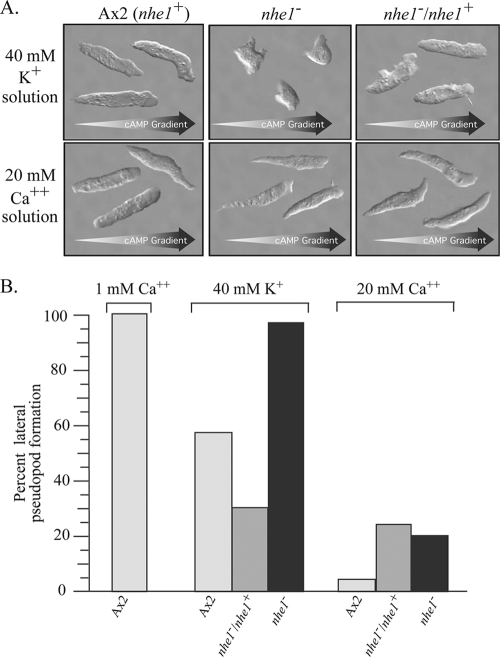Fig. 5.
Cells of the mutant nhe1− do not respond to 40 mM K+ by elongating and suppressing lateral pseudopod formation, but they do respond to 20 mM Ca2+. (A) Differential interference microscopy images of three representative Ax2 (nhe1+), nhe1−, and nhe1−/nhe1+ cells in spatial gradients of cAMP generated in solutions containing either 40 mM K+ (top panels) or 20 mM Ca2+ (bottom panels). Arrows at the bottom of each panel indicate the direction of the cAMP gradient. (B) Percent lateral pseudopod formation was determined by dividing the number obtained in 40 mM K+ or 20 mM Ca2+ solution for Ax2, nhe1−/nhe1+, and nhe1− cells by the number obtained for Ax2 cells in a nonfacilitating 1 mM Ca solution and multiplying the fraction by 100. Light-gray bars, Ax2 control (nhe1+); dark-gray bars, nhe1−/nhe1+ complemented control; black bars, nhe1− strain.

